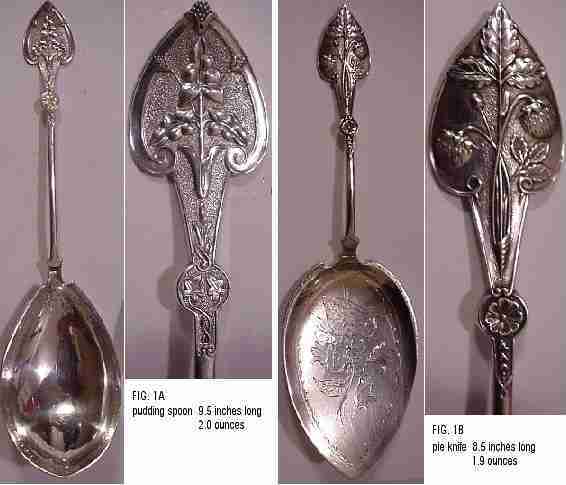
ASSOCIATION OF SMALL COLLECTORS OF ANTIQUE SILVER
ASCAS
| article # 201 |
|
|
|
|
(click on photos to enlarge image)ATTRIBUTION OF TWO SINGLE-DIE-STRUCK PATTERNSAt any rate, none of the examples I’ve owned or seen have been marked other than "COIN," sometimes with a number (Fig 2). The pieces seen are varied, from pie knives to sugar sifters, berry spoons to fancy ladles, and some--e.g., the pie knives--have differing implement ends. Other than a youth set, I have never seen place pieces, however. As my experience with the patterns broadened, I studied the utensil ends, some of which are quite distinctive. A special study was made of pickle sets, since the blades and tines all seemed to be consistent. At that point I realized that what I was seeing were Knowles and Ladd pickle set utensil ends. For comparison, see Fig 3, which shows pickle sets in CRETE and QUEEN as well as both "LEAF & BERRY" patterns. The two former patterns are known to be by Knowles & Ladd and introduced ca. 1865-70. Once started on comparisons, I found other implement end matches. Also, K&L were known to stamp single or double numbers on their patterns, probably as journeyman’s marks. As a side note, every so often an engraved pattern that has the "LEAF & BERRY" blank shows up. On an online auction site a few years ago one appeared that was actually marked "K&L" as well as "COIN" (Fig.4). If anyone reading this has an example of either of these two single-die-struck patterns with a K&L mark, I would appreciate a picture being sent to ASCAS. (*) The pattern has only one side, the back being blank.
|



